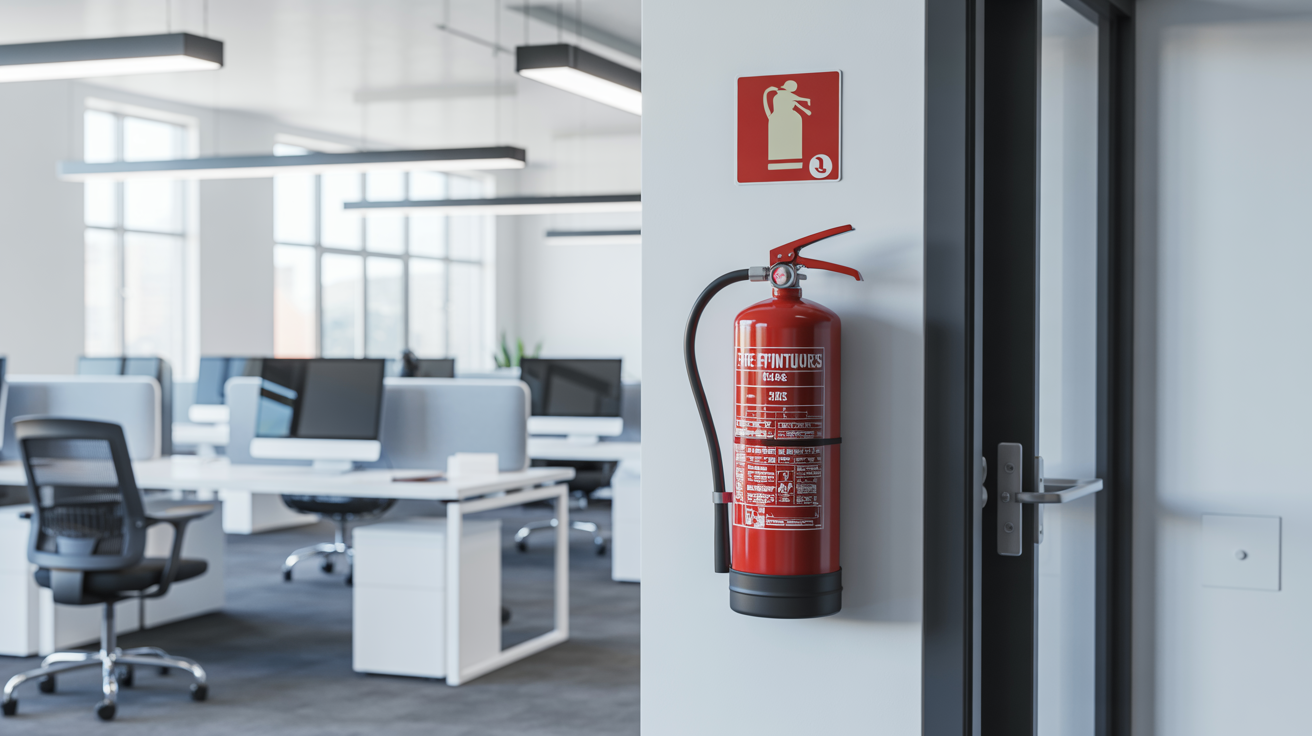Office Fire Safety Guide
Comprehensive workplace fire safety guide for business owners, property managers, and safety coordinators. Protect your employees and business with proper fire prevention and emergency planning.

Workplace Fire Statistics
Common Causes of Office Fires
Electrical Equipment & Wiring
The leading cause of office fires. Overloaded circuits, damaged cords, and faulty equipment cause thousands of workplace fires annually.
- • Never overload power strips or outlets
- • Replace damaged electrical cords immediately
- • Turn off equipment when not in use
- • Schedule regular electrical inspections
Kitchen & Break Room Fires
Unattended cooking, malfunctioning microwaves, and grease fires in break rooms pose significant risks.
- • Never leave cooking unattended
- • Clean microwaves regularly
- • Keep flammable materials away from cooking areas
- • Install appropriate fire suppression equipment
Lithium Battery Devices
Laptops, phones, e-bikes, and power tools with lithium batteries can experience thermal runaway, causing fires that traditional extinguishers can't handle.
- • Don't leave devices charging overnight
- • Use manufacturer-approved chargers only
- • Store e-bikes and power tools properly
- • Have lithium-specific fire extinguishers available
Heating Equipment
Space heaters and HVAC systems can ignite nearby combustibles if not properly maintained or positioned.
- • Keep 3-foot clearance around heaters
- • Turn off space heaters when leaving
- • Schedule HVAC maintenance regularly
- • Use only approved heating equipment
Office Fire Prevention Checklist
Daily Prevention Tasks
Monthly Inspection Tasks
Annual Professional Inspections
Emergency Evacuation Planning
Every Office Needs an Emergency Action Plan
OSHA requires businesses to have a written emergency action plan if they have more than 10 employees.
Essential Plan Components
Evacuation Procedures
Clear evacuation routes, assembly points, and procedures for ensuring all employees are accounted for. Include maps posted in visible locations.
Emergency Contact Information
Local emergency services, building management, utility companies, and designated emergency coordinators with 24/7 contact information.
Employee Training
Regular fire drills (at least quarterly), fire extinguisher training for designated employees, and general fire safety awareness for all staff.
Special Considerations
Procedures for employees with disabilities, protection of critical documents/equipment, and continuation of essential business operations.
Modern Office Fire Safety Equipment
LifeSafe StaySafe All-in-1
Perfect for modern offices with electronics, lithium devices, and kitchen areas. Handles 10 fire types including lithium-ion battery fires that traditional extinguishers can't stop.
- ✓ No training required - anyone can use it
- ✓ No cleanup mess or damage
- ✓ Works upside down for hard-to-reach fires
- ✓ Handles electrical and lithium fires
- ✓ Small and lightweight for easy access
Traditional ABC Extinguishers
Still useful for large structural fires, but have significant limitations in modern offices.
✓ Good for large paper/wood fires
✓ Required by most fire codes
✗ Cannot handle lithium batteries
✗ Requires training to use effectively
✗ Creates expensive cleanup mess
✗ Heavy and awkward to use
Recommended Configuration
For comprehensive protection, offices should have both traditional ABC extinguishers (for code compliance) and modern LifeSafe extinguishers (for effective real-world use).
- • One ABC extinguisher per floor to meet fire code requirements
- • LifeSafe All-in-1 near high-risk areas (kitchens, server rooms, charging stations)
- • LifeSafe All-in-1 on every desk or workstation for immediate response
Fire Safety Legal Requirements
OSHA Fire Safety Standards (29 CFR 1910.39)
Requires employers to develop and implement emergency action plans, including fire prevention plans for workplaces with more than 10 employees.
NFPA Life Safety Code (NFPA 101)
Establishes minimum requirements for fire alarm systems, emergency lighting, exit signs, and means of egress in office buildings.
Local Fire Codes
Requirements vary by jurisdiction but typically include extinguisher placement (within 75 feet travel distance), annual inspections, and fire drill frequency.
Fire Safety Best Practices for Offices
✓ Conduct quarterly fire drills - Practice makes perfect in emergencies
✓ Train all employees - Everyone should know evacuation procedures
✓ Designate fire wardens - Assign specific roles and responsibilities
✓ Keep exits clear always - Never block escape routes, even temporarily
✓ Maintain equipment regularly - Schedule professional inspections
✓ Update emergency plans - Review and revise plans when office layout changes
✓ Address lithium risks - Modern fires require modern fire safety solutions